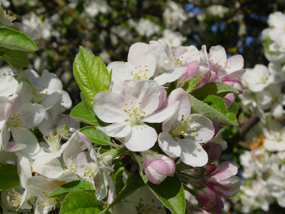People, in addition to hobbits, seek out mushrooms for their wonderful tastes. Coming in many exotic shapes and colours, these culinary treats can bring excitement to many a dinner plate. Caution must always be practised as so many mushrooms are toxic and can kill whether from touch or from ingestion. But getting a bit of education so as to learn which are safe is a small price to pay so as to savour these treats.
Typical mushrooms have a paltry 18 kcal of energy per 70 grams or 1.1e6 Joules per kilogram according to the USDA. Frying these wonders on the stovetop for 20 minutes at medium temperature (about 1000 watts) consumes 1.2e6 Joules of electrical energy. Hence, frying mushrooms takes more energy than what they provide to us. They’re a net energy loss. And, this doesn’t account for hiking in the woods to pick the mushrooms, effort to clean the mushrooms, building the stove and generating the electrical power to heat the stovetop element.
According to the law of entropy, every activity results in a net energy loss as with our mushroom example. How will we decide which activities are worth the energy expenditure and which aren’t?
References

Author’s photo
| See the BOOK | SUBSCRIBE |


